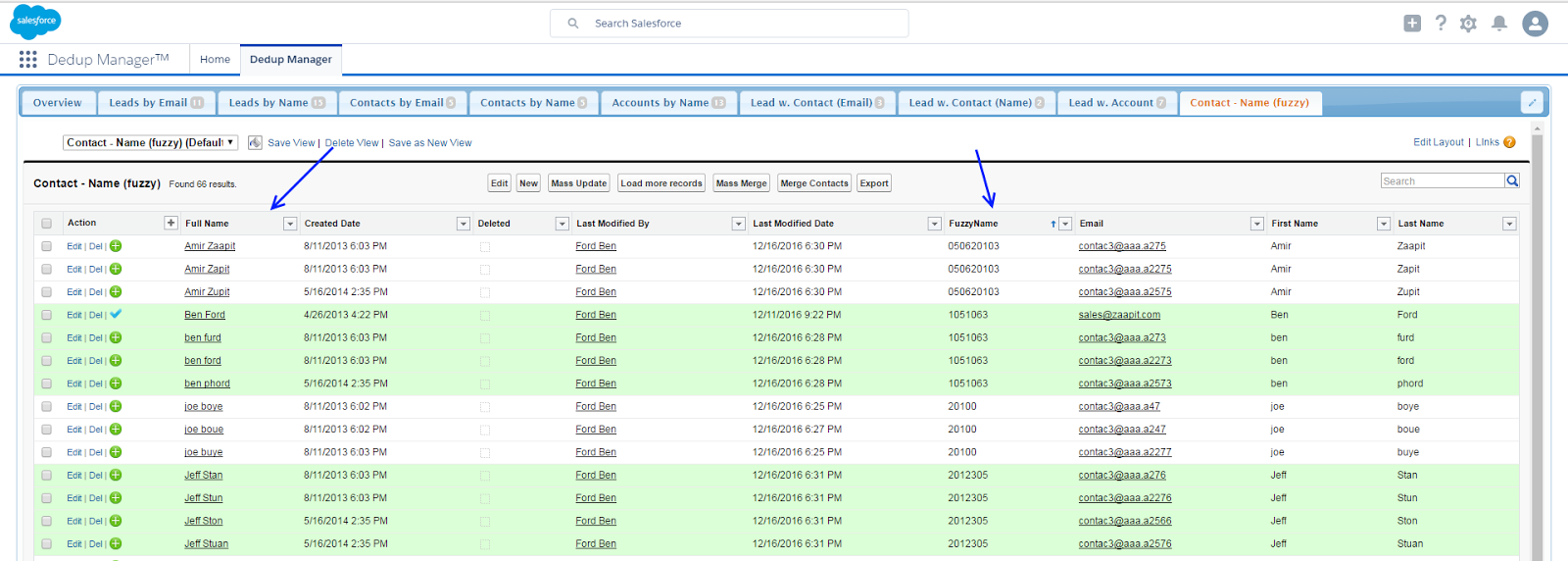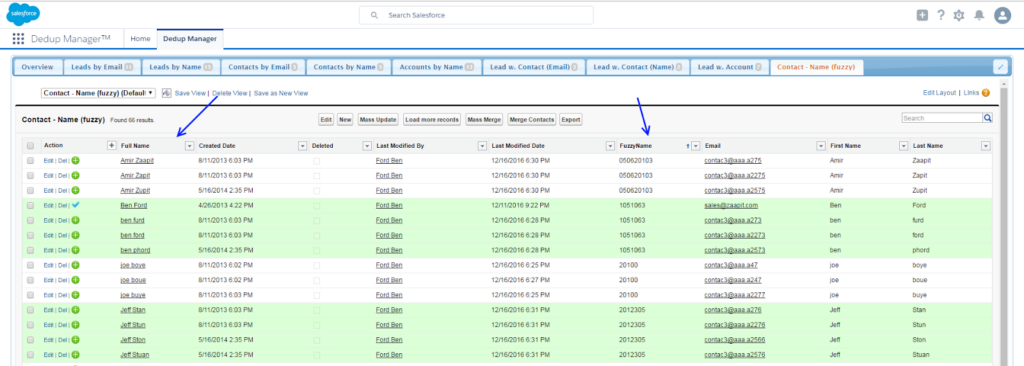
Fuzzy de-duplication is a process used to identify and merge duplicate records in a dataset, where the duplicates are not exact matches but are similar enough to be considered the same. This technique is particularly useful in situations where data entry errors, variations in spelling, or different formats can cause similar records to appear distinct. The following example will show you how to setup a fuzzy duplicates list-view with a mass-merge option using a formula within Salesforce.
Key Concepts of Fuzzy De-duplication
- Fuzzy Matching: Core technique for comparing records based on similarity.
- Similarity Thresholds: Defines the threshold above which records are considered duplicates.
- Data Preprocessing: Involves cleaning and standardizing data before applying fuzzy matching.
- Blocking/Indexing: Groups records into blocks to reduce the number of comparisons needed.
- Merging Records: Combines information from duplicate records into a single, unified record.
Benefits of Fuzzy De-duplication
- Improved Data Quality: Reduces redundancy and inconsistency in data, leading to more accurate and reliable datasets.
- Enhanced Efficiency: Streamlines processes that rely on accurate data, such as customer relationship management (CRM) and business analytics.
- Cost Savings: Reduces costs associated with duplicate mailings, customer service issues, and data storage.
Practical Implementation
In this example, we will demonstrate two distinct methods for creating a custom fuzzy text formula and using it to mass merge duplicate records: the traditional approach and the modern approach. This will help you decide which method best suits your needs.
1.The traditional approach:


2. Fuzzy de-duplication within Salesforce – the modern approach:
Conclusion
Fuzzy de-duplication improves data quality by merging similar records that aren’t exact matches, correcting errors, and standardizing formats. Key steps include setting thresholds, preprocessing data, using efficient blocking, and merging records. Benefits include better data quality, increased efficiency, and cost savings. The article compares traditional manual coding with modern tools for implementing fuzzy de-duplication in Salesforce, helping organizations choose the best method for their needs.

